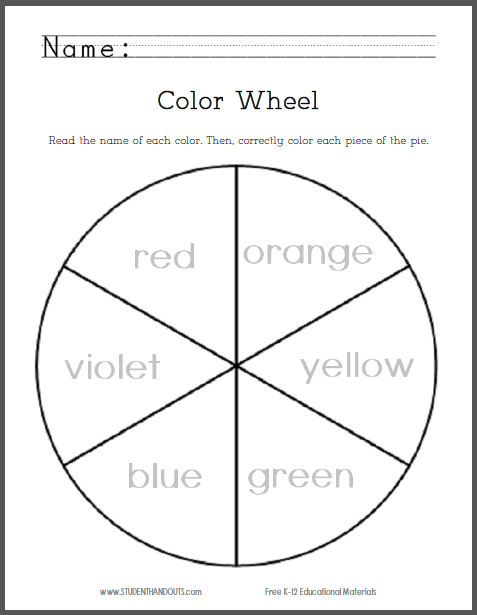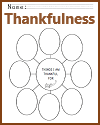Color Wheel to Print and Color |
|---|
| www.studenthandouts.com > Just for Fun > Arts and Crafts for K-12 Education |
 |
|---|
Here is a basic color wheel for primary students to fill in. Click here to print. |
|---|
|
A color wheel is a circular chart that displays the colors of the visible spectrum in a systematic and organized manner. It is a visual tool used in art, design, and various other fields to understand and work with colors effectively. The color wheel typically consists of primary, secondary, and tertiary colors arranged in a specific order.
Here are the key components and concepts related to a typical color wheel: Primary Colors: These are the fundamental colors that cannot be created by mixing other colors. In traditional color theory, the primary colors are red, blue, and yellow. Mixing primary colors in various combinations produces all other colors. Secondary Colors: Secondary colors are created by mixing equal parts of two primary colors. The three secondary colors are:
Complementary Colors: Complementary colors are located directly opposite each other on the color wheel. They create strong contrast when placed together. For example, red and green, or blue and orange, are complementary pairs. Analogous Colors: Analogous colors are located next to each other on the color wheel. They share similar undertones and create harmonious color schemes. For example, yellow, yellow-green, and green are analogous colors. Warm and Cool Colors: Colors on the color wheel are often categorized as either warm or cool. Warm colors, like red, orange, and yellow, convey a sense of warmth and energy. Cool colors, such as blue, green, and purple, evoke a sense of calm and serenity. Tints and Shades: Tints are created by adding white to a color, making it lighter. Shades are produced by adding black to a color, making it darker. By adjusting tints and shades, a wide range of variations can be achieved within a single color. Color Harmonies: Color wheels are useful for creating color harmonies and palettes. Different harmonies, such as complementary, analogous, triadic, and split-complementary, can be generated by selecting specific colors from the wheel. Artists, designers, and anyone working with color often use the color wheel as a reference tool to make informed decisions about color selection, combinations, and harmonies. It serves as a valuable guide for creating visually pleasing and effective color schemes in various creative endeavors. |
| www.studenthandouts.com > Just for Fun > Arts and Crafts for K-12 Education |









